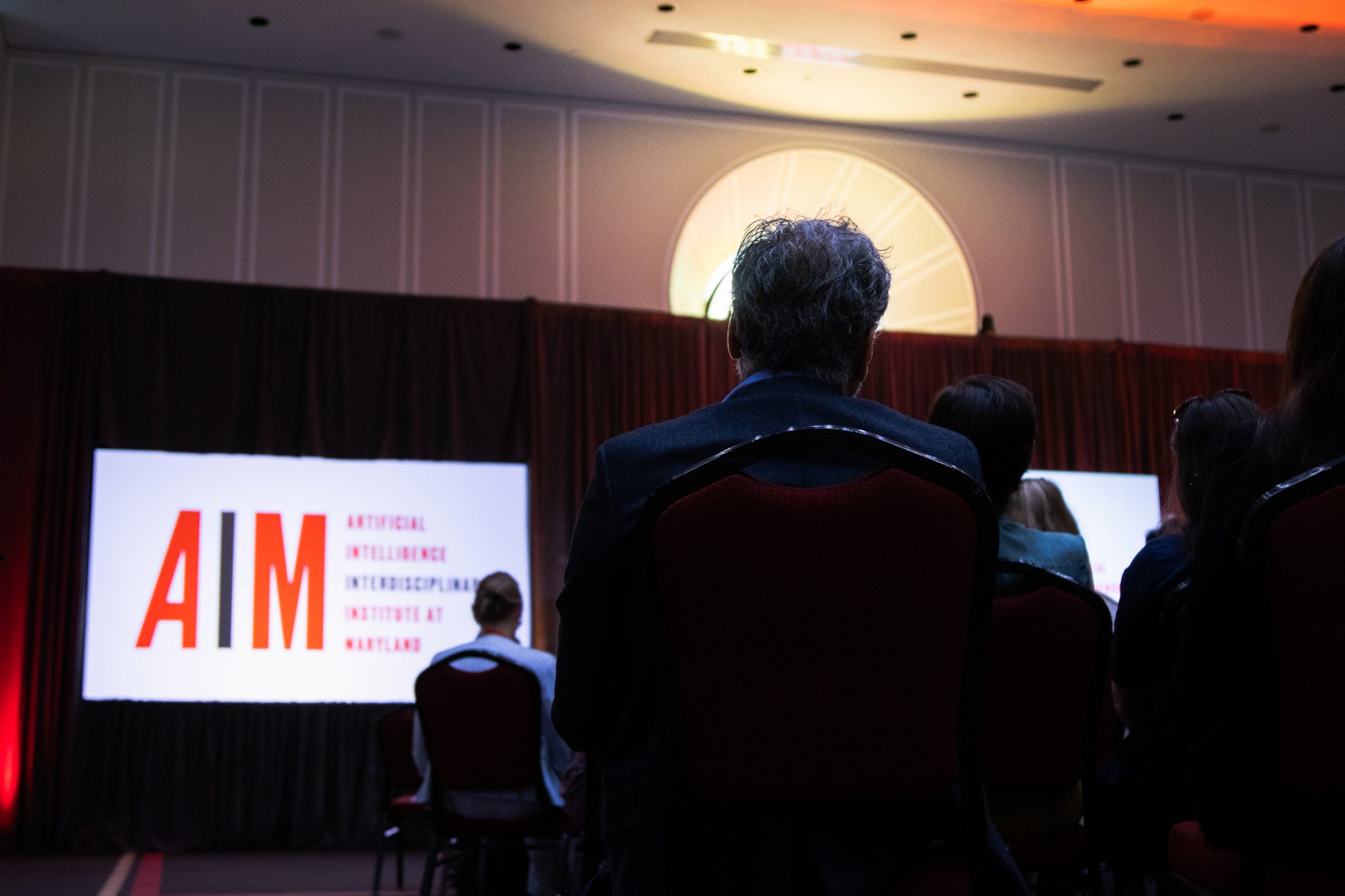The University of Maryland celebrated the launch of its artificial intelligence interdisciplinary institute Thursday at the Samuel Riggs IV Alumni Center.
The event featured several speakers including university president Darryll Pines, senior vice president and provost Jennifer King Rice and Hal Daumé III, the new institute’s director. The launch highlighted university students and faculty’s artificial intelligence research and detailed the technology’s future at this university.
“Now is the moment at the University of Maryland to step up,” Pines said. “Step up … to the AI challenge, because here we always aim to be better,” Pines said in a speech.
Daumé said the new institute has three primary objectives — education, research and building partnerships.
The artificial intelligence institute will offer tailored educational pathways in artificial intelligence for students, which include a bachelor’s of science and bachelor’s of arts program, Daumé said.
The institute also plans to provide general education courses that are accessible to all students regardless of their major, Daumé noted.
Daumé emphasized that focusing on interdisciplinary applications of artificial intelligence will be crucial to develop a “competitive advantage” in research output.
“I think the way that we stay relevant and the way we stay cutting-edge is to make sure that we’re plugged in to organizations that have problems that need solving,” Daumé said.
[UMD announces new artificial intelligence institute]
During the launch, several faculty members and students from multiple departments presented their artificial intelligence research and usage in courses.
Britt Williams, an associate clinical professor in the architecture, planning and preservation school, detailed her use of artificial intelligence in architectural design courses. A grant from this university’s teaching and learning center facilitated this addition, Williams noted.
Students can explore text and image-based artificial intelligence to enhance architectural design methodologies, Williams said.
Lauren Rhue, an assistant professor in this university’s business school, shared her research in artificial intelligence’s biases. Rhue focused on how artificial intelligence models process and retrieve information based on gender, she said.
“I think this is a part of a larger body of work,” Rhue said. “We need to figure out how we think about disparities and bias in this context.”
Pines addressed concerns about the ethics behind artificial intelligence. The “fear and trepidation” behind artificial intelligence’s use is natural, Pines said in a speech.
[University Senate votes to remove final exam requirement]
He emphasized that being responsible about artificial intelligence development will be crucial for this university.
“We must approach AI with the same fearless attitude that we bring to new challenges or any new development,” Pines said in a speech Thursday.
Jayesh Jayashankar, a neuroscience and cognitive science doctoral student, explored the intersection of artificial intelligence systems and cognitive science, along with associate kinesiology professor Rodolphe Gentili.
The research aims to create a system that detects when a human is experiencing mental fatigue and adjusts to take over certain aspects of a task, the pair said.
“The bigger goal is to have efficient task allocation where the machine goes to mitigate the human’s mental workload,” Jayashankar said.
Rice emphasized the potential for positive change that artificial intelligence will bring to the university community.
“We’re committing to developing and using AI for the public good, to improve lives, to address inequities, and as President Pines said, to aim for better, “ Rice said in a speech.



